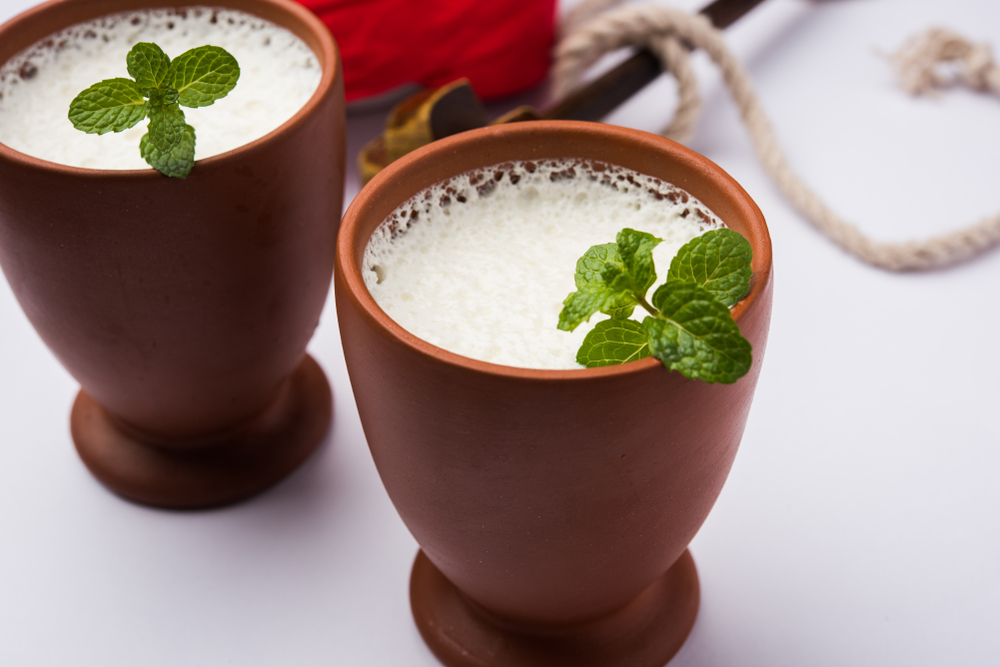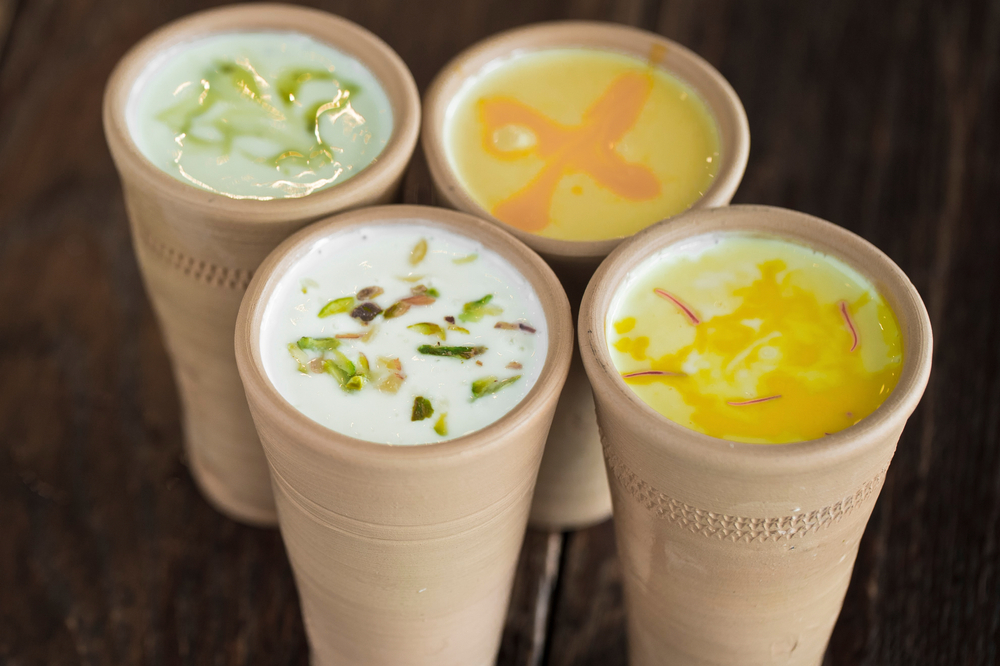When learning about the origins of cannabis culture, you cannot overlook India’s historically significant role and how the traditional weed-infused beverage, bhang, set the stage for consumable cannabis edibles.
India is a land that is famous for many things: a rich and diverse culture, the Hindi Film industry, Bollywood, stunning colourful celebrations and festivals, as well as its delicious food full of rich, distinct flavours.
But, in the world of cannabis, India is known for something else entirely. Deep within the roots of Indian culture and religion, cannabis plays a much larger role.
As cannabis had heavy ties to the infrastructure of the Hindu religion, so too did its consumption.
India brought to the table one of the world’s first documented cannabis-infused beverages – bhang. During Hindu festivals, including Maha Shivratri and Holi, bhang is consumed and celebrated for its ability to help achieve spiritual enlightenment.
While Bhang may not be as well known in the western world, its footprint in India is massive.
To learn more about the history of cannabis and cannabis culture and take a more in-depth look at what Bhang is and how to make it, keep on reading!
What is Bhang? Can You Smoke It?

Generally speaking, bhang isn’t something you’d typically smoke. In fact, the word bhang refers to a paste that is made from the leaves and buds of female cannabis Sativa plants.
That said, the word is commonly used to describe a popular beverage called Bhang Lassi, which is also made of the same paste.
Bhang is essentially an edible form of cannabis made from milk, water, spices, nuts, and cannabis. It shares a deep and rich history with India’s people and religion, with its earliest use dating as far back as 1000 BC.
As we said before, bhang is typically consumed during religious festivities like the Hindu Maha Shivratri and Holi festivals.
Interestingly enough, Central Asia was discovered as the birthplace of the first cannabis plants. However, its use is still outlawed in the region.
That said, specific cannabis-derived products, such as bhang, can be purchased at government-sanctioned stores in religious areas of the country.
For the most part, there is no social stigma attached to consuming Bhang in India. In fact, it is widely accepted and celebrated.
The History of Bhang

Since Central Asia was the birthing ground of cannabis, the plant naturally had a rich history with the people living in the region. In the Himalayan Foothills of India, cannabis plays a pivotal role in their religion.
According to the Hindu religion, cannabis is considered one of the five most sacred plants due to its psychoactive and introspective effects.
It is so sacred that Lord Shiva, one of the most prominent gods in the Hindu religion, celebrated it for its ability to help him search and achieve balance within himself.
As the story goes, Shiva himself had wandered off into the fields after a heated argument with his family. Void of all his energy from the family conflict and boiling in the hot sun, Shiva decided to seek refuge under a distinctive leafy plant.
When he awoke, he opted to experiment and sample the leaves and flowers of the plant. Surely enough, the plant was cannabis, and once he consumed it, he instantly felt all of his energy return. Since then, Lord Shiva has been heavily associated with the cannabis plant, also having been known as the Lord of Bhang.
Cannabis has been popular in India since as far back as recorded history can remember. As we said before, traditionally, bhang is consumed with spices, milk, and nuts.
Today, cannabis is illegal in India, but there is a passionate movement working towards legalization.
Bhang Benefits
Since bhang is a cannabis product, it shares many of the same benefits as other types of edible variants of the plant. Some of these benefits include:
Reduced Inflammation And Pain
One of the many wondrous benefits of weed is its ability to reduce oxidative stress, inflammation, and pain.
For those who experience joint pain, muscle aches, or other types of chronic pain in the body, cannabis has shown promising results in mitigating the pain and distress.
Sedative Properties
Cannabis is well known to produce relaxing properties that can help aid those struggling with insomnia or other sleep-related abnormalities.
On top of that, using cannabis for sleep may also help reduce muscle spasms and twitching, reducing total sleep disturbances.
Appetite Stimulant

For those struggling due to a lack of appetite, cannabis has shown promising results in stimulating it.
People suffering from appetite loss due to cancer and the adverse side effects of its treatments, such as chemotherapy, have found solace in the plant’s natural ability to increase appetite.
Enhanced Mood
Cannabis is responsible for producing feelings of happiness and euphoria.
When consuming edibles cannabis, the psychoactive effects may enhance mood and provide a feeling of relaxation.
These properties make it an excellent potential option for treating symptoms of anxiety, depression, and other mood disorders.
How to Make Bhang
If you’re thinking about trying to make bhang at home, it’s actually not all that hard to do. However, while it is quite simple, the process itself can be quite involved.
So, make sure you set aside an appropriate amount of time!
If you’re interested in making your own bhang, here’s how:
Ingredients
- Saucepan with a lid
- Mortar and pestle
- Strainer
- Herb grinder
- 1/2 ounce of fresh cannabis (a strain of your choice)
- 2 cups of water
- 3 cups of whole fat milk
- 1/2 cup of sugar or honey
- ¼ tsp ground ginger
- ¼ tsp ground fennel seeds
- ¼ tsp garam masala
- ¼ tsp ground black pepper
- ½ tsp cardamom
Instructions
- Pour your water into your saucepan and bring it to a boil.
- While you wait for your water to boil, grab your herb grinder and begin grinding your weed to a fine consistency. If you don’t have a grinder, try chopping the weed with a knife or scissors.
- Once your water begins to boil, add your ground cannabis to the pot and remove it from the heat. You’ll want to let your weed steep for approximately 10 minutes.
- When it has finished steeping in the water, grab your strainer and begin removing the plant matter from the water. If you find that your leaves are holding a lot of water, feel free to squeeze them over the pot to drain the water. Set the leaves aside.
- Heat the milk in a pan on medium heat.
- With your milk heated up, grind your weed in the mortar and pestle with a couple of teaspoons of heated milk. Incrementally add more milk as the leaves begin to soak them up. Continue this process until around 1/2 a cup of milk is used.
- Strain the plant material from the milk and set the milk aside.
- Combine the water that was used to boil the cannabis with the infused milk and mix with spices.
- Chill and stir well before serving.
Bhang – Your New Go-To Weed Beverage
The Hindus have praised bhang for its introspective and healing properties and have used it to seek divination for generations. Although cannabis is still illegal in India, Bhang is still widely available.
It is so readily available, in fact, that it can be purchased at particular street stands and vendors.
Unfortunately for those of us in the western world, Bhang isn’t as readily available. However, you still have the option to make it on your own.
If you’re looking for a fun and creative way to enjoy your weed and enjoy participating in fun at-home DIY projects, we would highly recommend giving it a try. You can even customize it with different spices and garnishes to really make it your own.
Happy trails!


 No products in the cart.
No products in the cart.